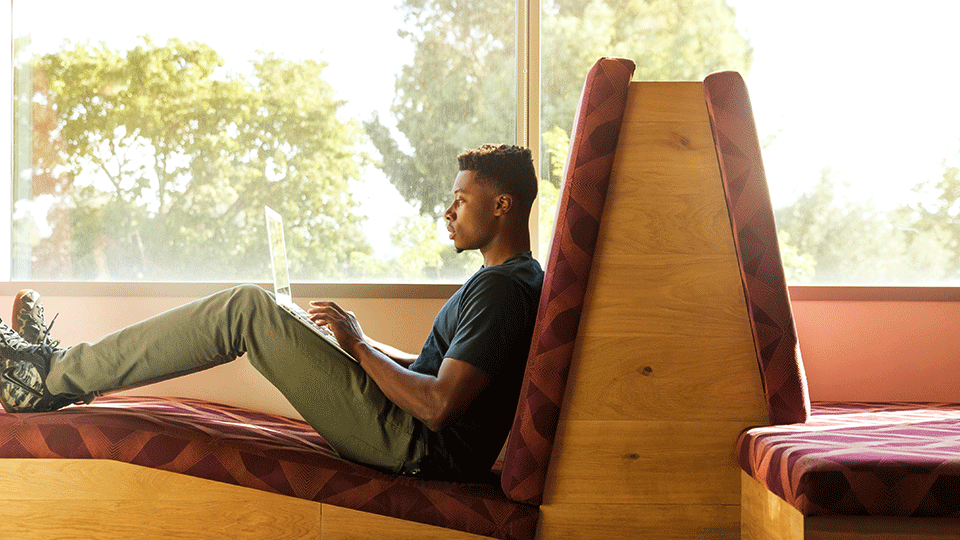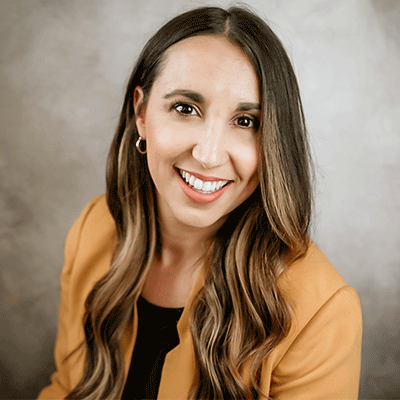
Today’s job market is intimately intertwined with technology, making it easier to find a career than ever before. With websites like Indeed, Glassdoor and CareerBuilder at your fingertips, connecting your skillset to its best-fit position has become intoxicatingly pain-free.
Prior to the internet age, you’d be hard-pressed to find a new job without typing out a stack of resumes, flipping through your local newspaper’s wanted ads and vigorously pursuing each role slowly over time.
So yeah, things, for the most part, are improving.
That said, with all of the tools available to job-seekers today — tools developed to expedite the hiring process for all parties — it’s understandable when people have questions about the best ways to navigate each.
In the pursuit of your next career, the kind of job you’d love at a company you respect, questions about how to use these platforms is the last thing you need.
Recently, LinkedIn — a business employment-centered social media platform owned, operated and developed by Microsoft Corporation — has cemented a place among the premier resources for job seekers around the world.
With the right understanding and tactics, LinkedIn can make an impact on your own job search. But what do you need to know about finding a job on LinkedIn?
Here at Anderson Trucking Service (ATS), we’ve been using LinkedIn to hire employees, across divisions, for years now. In fact, some of our top-performing hires were sourced through LinkedIn.
In this article, we’ll explain the three main things you can do to set yourself apart on what has become an increasingly impactful platform. Your three steps to finding a job on LinkedIn are:
- Step 1: Update and optimize your profile
- Step 2: Expand your network and search for jobs
- Step 3: Apply for a job
Step 1: Update and Optimize Your Profile
First impressions are huge, even as the world becomes more technologically focused. Instead of meeting in person for the first time, though, these days your first impression with employers and professional connections, in all likelihood, will happen online.
For this reason, it’s important that your LinkedIn profile accurately portrays your skills, passions, values, goals and personality — a fact that’s often overlooked. What you openly display on your personal profile (photos, experience, interests, etc.) can provide a lot of context for potential employers and professional connections.
On the LinkedIn platform, individual profiles are comprised of these core sections:
- Profile headshot and cover photos
- Personal biography
- Breakdowns of relevant work experience
- Summaries of recent and historical activities
- An Overview of licenses, certifications, skills and interests
Together, these buckets of personal and professional information can go a long way toward differentiating you from the field. Here’s what you should think about when creating your own LinkedIn profile . . .
Profile Headshot and Cover Photos
Where LinkedIn headshots are concerned, it’s important to ensure yours is professional, well-lit and void of unnecessary distractions. Many people make the mistake of using a “fun”, “quirky” or “unrefined” photo of themselves — the types of pictures that work well on platforms like Instagram and Facebook.
You’ll want to avoid this when choosing your headshot for LinkedIn. Instead, make sure to use a professional photo that captures you from the waist/middle of the chest up. Find a well-lit area with a plain, non-distracting background to use.
Most importantly, don’t forget to smile; a nice grin makes people feel good and exudes confidence — both of which are important to portray in the professional world.
As far as your cover photo is concerned, this is a good place to tie your profile back to your area of work, study or interest. If you’re a student, a photo displaying your college logo or campus will do perfectly. For working professionals, consider adding a photo related to the work you do (company branding, industry products, etc.).
Tip: add the #OpenToWork filter to your profile picture. This expresses your intentions to all employers that happen across your profile.
Personal Biography
In pursuit of professional connections and job opportunities on LinkedIn, your bio will be crucial. This is where you can set yourself apart by introducing people to how your personal values have shaped your professional choices and how the skills you possess today will benefit any organization looking to fill the role you’re looking for.
Although everyone includes different things in their biographies, and yours should be shaped subjectively, here are some things to keep in mind:
- There’s no need to include education or work experience
Sure there’s value in listing your professional accomplishments and work history, your LinkedIn bio isn’t the place for this information — there are other sections for that 😁.
- Include a personal mission statement
One of the most impactful things many LinkedIn members include here is what’s called a “personal mission statement”. Formulate one of these by listing (in 50 words or less) your goals, values and motivations and include them in your bio.
- Keep it casual and professional
Making a LinkedIn bio personable yet professional is something of an art form. Yet, when done correctly, these bios tend to perform the best. Be sure to use casual language that helps showcase your personality. Great companies and their recruiters are looking for professionals that are both approachable and polished in their communication.
Breakdowns of Relevant Work Experience
This section of your profile is pretty self-explanatory; here is where you list and explain the duties associated with the jobs you’ve held in the past. This information will include things like:
- Start and end dates
- Location
- Primary responsibilities
- Other relevant insights
While LinkedIn is a white-collar-dominated platform, and people who are younger in their career may feel silly listing high school jobs or past part-time positions, I’d recommend you list yours.
There is always something to be gleaned from every job we do.
And, with the right spin, you’ll find that listing the duties you covered at that grocery store once upon a time — and the skills you developed in the process — made it a truly valuable experience. Don’t shy away from filling up this section of your LinkedIn profile.

For those of you with more tenured experience, unless relevant to your job search, it’s not necessary to provide more than 10-15 years of your past work history. The more stability and focus you can show in your history, the better!
Summaries of Recent and Historical Activities
One of the coolest parts of using LinkedIn’s platform is the ability to interact with other people in your selected field and areas of interest. Liking posts that interest you, leaving comments on intriguing discussions and creating your own content to share with your network are all examples of LinkedIn “activities”.
Each of the activities you participate in, both recent and historical, will be collected and displayed on your personal profile. In turn, this information is a great way for potential employers/professional connections to get to know you before you ever meet.
In recognition of this, it’s important that you’re active on LinkedIn’s platform — especially over the course of your job hunt. Comment and leave a like on interesting posts and create your own content by sharing something you’ve learned or found to be helpful. You’d be surprised at the impact these things can have on the growth of your network and the connections you hold.
An Overview of Licenses, Certifications, Skills and Interests
The final aspect of every LinkedIn profile is the sections that list a member’s licenses, certifications, skills and interests. These are the areas where you can set yourself apart from others by displaying your accomplishments and skillsets.
Show the professional marketplace that you have initiative by listing the professional licenses and certifications you’ve earned. List each of the skills (both technical and soft) that you’re proud to hold — and get some of your connections to “endorse” you for them. Finally, your profile’s “interests” section will display a collection of the pages (from influencers, companies, groups and schools) you “follow” to provide a bit more context for others on LinkedIn to utilize.
The more data and information you put into these sections, the wider your appeal will become. As such, consider taking LinkedIn’s free “skill quizzes” to verify and reinforce the expertise and competencies you can offer an employer.
Step 2: Expand Your Network and Search For Jobs
Once you have your profile set up properly — complete with a snazzy headshot and all relevant information — you’re ready to start your job search. Using LinkedIn as your tool, there are a couple of ways to do this.
To find a job on LinkedIn you can:
- Use LinkedIn’s “jobs” tools
- Follow relevant companies and connect with their stakeholders
Let’s continue by talking through the process of utilizing these methods.
How to Use LinkedIn’s “Jobs” Tools
On the LinkedIn platform, the tools available to job seekers are quite robust. Whether you’re looking to find a job immediately, in the distant future or at any time in between, LinkedIn has a solution to fit your needs.
Under the “Jobs” tab on your smartphone, tablet or desktop computer, you’ll find a comprehensive database of open positions that can be filtered to your liking.
Similar to other internet job boards, LinkedIn gives users the option to filter based on a number of relevant criteria including but not limited to:
- Job location
- Date/time of the job posting (any time, past month, past week, past 24 hours)
- Position experience level (internship, entry-level, associate, mid-senior level, director, executive)
- Company name
- Job type (full-time, part-time, contract, temporary, volunteer, internship, other)
- Whether the job is on-site, remote or a hybrid position.
Using these filter controls, you’ll find it easy to whittle down your search as microscopically, or as broadly, as you’d like.
From here LinkedIn users have the option to save any of the jobs they’re interested in — to be explored or applied for at a later date. With this data, LinkedIn will also serve recommendations of related jobs under their “Jobs” tab based on previously saved roles.
Additionally, the LinkedIn Jobs tool sends out relevant job-related emails — catered to match your criteria — on a daily, weekly or monthly basis. By opting into these notifications, you can be consistently apprised of new positions that fit your filtered criteria.
Follow Relevant Companies and Connect With Their Stakeholders
This second method for finding a job using LinkedIn often goes hand in hand with the first. You see, using the information collected from the lists of potential job matches, many people find it beneficial to “follow” prospective employers and their current employees.
In doing so, these individuals position themselves one step closer to the hiring process, in many cases opting to connect with the job poster themselves.
Although this is a great way to pinpoint out some potential employment fits, you can also do this without the LinkedIn “Jobs” tab entirely.
By simply following some of the companies you’re interested in working for and creating a job alert (by clicking the button directly under their individualized “jobs” section) you can get customized notifications from each one of them.
Over time, as your intrigue and understanding of a company grows, connecting with some of the people within the organization — especially those connected to a job posting — is a great way to secure consideration. Ask these individuals about the position at hand or, if you’ve come to know them well, for a referral.
When utilized correctly, LinkedIn’s jobs, connection and direct messaging features can work side by side with you in your job search.

Step 3: Apply For a Job
The third and final step you’ll need to take toward finding a job on LinkedIn is to apply; to put yourself out there, to state your case and wait. Luckily, the LinkedIn ecosystem makes this process pain-free and easy for every applicant and even lists the total number of applicants a company has received (via LinkedIn) for each role.
The two ways to apply for a job through LinkedIn are:
- Using the “apply now” feature
- Applying through each company’s internal application portal
Here’s what each of these will entail. . .
How to Apply Using LinkedIn’s “Apply Now” Feature
LinkedIn gives employers the option to field applications directly on the LinkedIn platform. Although the comprehensiveness of this application can be catered to the needs of each organization and role, these applications are typically quick and easy.
For this reason, this has become a great way for people to apply on their mobile devices or when they’re pinched for time. Simply sign into the LinkedIn app, find the job you’re interested in, hit “apply now” and fill out the application. Pretty painless.
Applying Through Each Company’s Internal Application Portal
For the businesses that don’t exercise the “apply now” feature for their LinkedIn job postings, you’ll be redirected to their internal job application instead. From here, your experience will be consistent with those applications you’ve filed in the past.
Expect to upload your resume and a relevant cover sheet and answer additional questions pertaining to your experience and the job in question. This application will likely mirror one offered through LinkedIn’s “apply now” feature, with the main difference being the initial redirect and your user experience.
Don't worry, no matter which application you end up filling out, all of the information will be submitted to the same place — ensuring your proposal isn’t differentiated based on the method with which it was received.
Ace Your Next LinkedIn-Generated Interview!
As you know, LinkedIn is an excellent tool in many respects. Not only does the platform offer users a place to connect with like-minded individuals, share their knowledge and expand their skills, but you can find a great career there as well.
That said, securing your dream job will take more than LinkedIn can give you.
No, getting your foot in the door will require finely-tuned interviewing skills and a good deal of preparation, to boot. Don’t worry, though, we’re here to help you through this step of your journey as well.
Check out our article, Interview Etiquette: 13 Tips For Crushing Your Next Job Interview for a comprehensive overview of what you should prioritize before, during and after your next job interview.
Finally, if you’re interested in pursuing a career in the transportation and logistics industry, consider this a formal invitation to start out on this path. Anderson Trucking Service is always looking to add great, driven individuals to our growing organization.
And, with locations across the United States, there’s likely a great position waiting for you. Check out our open positions today!



